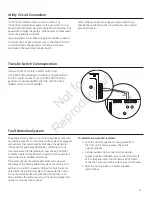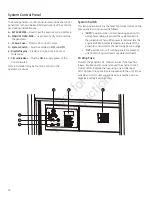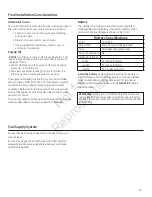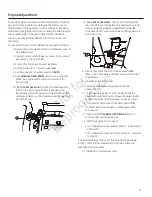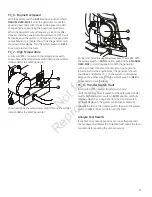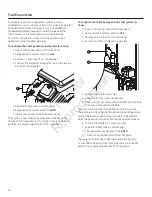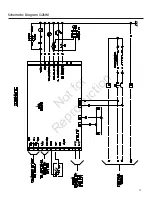
10
electrical and fuel inlet Locations
The 3/4 inch N.P.T. fuel inlet connector (a) and electrical inlet
location (B) is shown.
The generator is shipped already attached to its mounting
pad. Unless mandated by local code, a concrete slab is
not required.
If mandated by local code, construct a concrete slab at least
3 inches thick and 6 inches longer and wider than the unit.
Attach unit to slab with 1/4” diameter (minimum) masonry
anchor bolts long enough to retain the unit.
A
B
The generator weighs more than 240 kg (530 pounds). Proper
tools, equipment and qualified personnel should be used in
all phases of handling and moving the generator.
Two 48” lengths of 1” pipe (
c), supplied by the installer, are
required to lift the generator manually. Insert pipes through
the lifting holes (D) located near the unit’s base.
Lifting the Generator
You may also lift the unit using a “hook and hoist” method
attached to the lifting pipes, provided that you use a
spreader bar to ensure that the chains or cables DO NOT
touch the generator’s roof.
After unit is in place, fill the lifting holes with the supplied
lifting hole plugs. Retouch any chipped paint with supplied
touch-up paint.
C
D
WarninG Hazardous Voltage - Contact with power lines can
cause electric shock or burn.
Lifting Hazard / Heavy Object - Can cause muscle
strain or back injury.
If lifting or hoisting equipment is used, DO NOT contact any
•
power lines.
DO NOT lift or move generator without assistance.
•
Use lifting pipes as described in
•
Lifting the Generator
. The unit
may shift on the lifting pipes during movement, which can
cause injury.
DO NOT lift unit by roof as damage to generator will occur.
•
Not
for
Reproduction

















